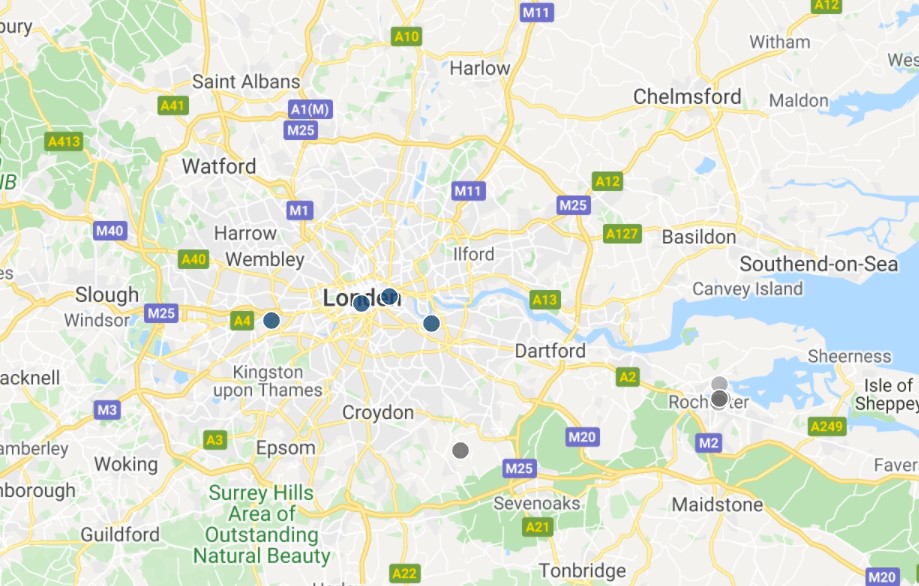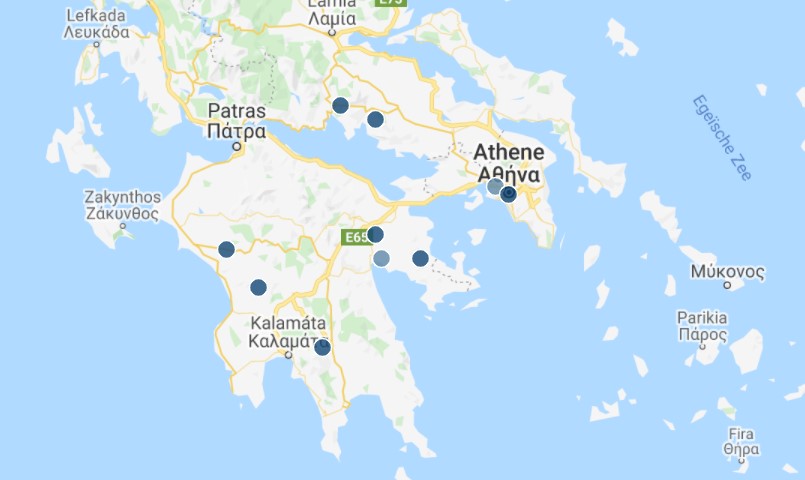Blog Connections
WHS Hotspots
Since at least 2008 we have distinguished “WHS Hotspots” on this website. From the start its connected sites always have been under much debate as exact criteria do not exist, which is a bit hard to handle for people that enjoy order and organization (including myself). We currently have 93 hotspots, spanning 496 unique sites. This means that 43% of the 1154 WHS are in a hotspot.
After the recent surge in interest in the topic of WHS hotspots at the Forum, I spent some time this week upgrading and refreshing these connections. All have a center now, a reference to neighbor hotspots if applicable, and most of them also explanations to locations and how to get there. In addition to the Forum discussions, I used the reviews of the regular public transport travellers to see whether a return day trip would be possible. I’ve linked to access instructions on official websites and to specific reviews describing getting there on public transport.

When is a hotspot a hotspot?
A hotspot is “a cluster of at least 4 WHS within reach for a return day trip from a center”. We’ve had long discussions in the past about what “within reach” essentially means – some are not deterred by 400km drives and back, but travelling 4.5 hours on public transport to (not) see a Pile Dwelling is too much for all.
There are no rigid distance limitations (as they differ by the mode of transport and the quality of the roads/trains etc), but rules of thumb are:
-
The center should be a place where you want to stay for a couple of nights, preferrably with a WHS itself. Having an international airport is also a bonus.
-
200km or a 4 hour trip each way is a reasonable indication.
-
No flights – it should really be a geographical cluster.
-
No overlap with other hotspots, only when a WHS truly lies halfway then it can be assigned to 2 hotspots. Also serial locations in different regions can of course put a WHS in multiple hotspots.
-
Practically possible: only ‘friendly’ border crossings included, trains/buses need to run frequent enough to allow for a return trip, opening hours of the WHS taken into account.
-
Private and public transport are both allowed (or combinations). Some are a car-only hotspot (flagged).
Also, in metropolises such as Beijing and Mexico-City you need to be aware of the intracity travel, eg. to a “northern bus station” which easily can take an extra hour.

Hotspot trivia
With 17 WHS each, Brussels and Frankfurt are the no. 1 hotspots. And these cities are only 3 hours apart by train! Paris has the 3rd place with 13 WHS.
Small countries (NL, Belgium, but also Israel and Tunisia) are one big hotspot.
Ultimate hotspots can also be found in the WHS within Walking distance connection (needs 3 within 15km to make the connection).
62 of the 93 hotspots are in Europe. The ones outside have been steadily increasing: this year we could add one in Iran: Shush. Iran has a number of hotspots, as do China and Japan (thanks to fast trains).
Els - 15 August 2021
Comments
Nan 15 August 2021
Great post and nice you took the time to housekeep @els.
>> So, quite rightly, the 2 got merged. We were trying to find ways of assisting the planning of trips to WHS – but how many years did it take to get the Maps? I guess the internet and the tools available just weren’t ready “way back” in 2008!!
Took some time to get everything in place ;)
Els Slots 15 August 2021
"the number of connections is increasing fast and can easily go to 300 (or 500)" -> we have 1402 now!
Solivagant 15 August 2021
“Since at least 2008 we have distinguished “WHS Hotspots” on this website.”
Since 27 April 2008 to be precise. We were adding new Connections nearly everyday back then and exchanging e-mails both on them and on how best to organise them. The need was soon recognised to “group” Connections in some way by having “2 levels” of definition. I have checked back in my e-mail files.
We started with separate individual connections for each “Region”” and also had “Close to a Capital City”……
And here is your suggestion from that day
“Regional connections
The regional connections are popular. I have added Rhine, Nile, Danube, and the Black Sea is under way. I do believe in the Hotspot connection (my idea!), as it is a more creative regional connection than just subdivide all countries. And of practical use. The underlying issue is that the real connection actually should be called ‘Cracow Hotspot’. ‘Cracow Hotspot’ is on the same level as ‘ Danube ’ or ‘Art Nouveau’. 22 different hotspots have been spotted so far (in Europe, maybe Asia will have some too). It feels like too many now, but the number of connections is increasing fast and can easily go to 300 (or 500). Then 22 (or 25/30) hotspots is no problem. We will have 10 animals, 20 empires and 30 famous people then also.
My proposal: split the hotspots into several new connections: Cracow hotspot, Tuscany hotspot etc..”
We soon recognised all the issues which your blog post today discusses.. I gave this response on the same day -
I think a "Hot spot" and "Close to a capital city" are more about "ease of visiting" and should be designed to help people design their trips, whether for a week end or 2 weeks - beyond that people could link Hot spots for themselves? The latter should be within a reasonable day return's journey and a Hot spot should cover a genuine region. Again I have often wondered whether there isn't an easy way to capture the Google maps information”
So, quite rightly, the 2 got merged. We were trying to find ways of assisting the planning of trips to WHS – but how many years did it take to get the Maps? I guess the internet and the tools available just weren’t ready “way back” in 2008!!